

Lyme & Tick-Borne Disease Testing & Statistics. BENNETT COMPOST. What To Do If You Find Spotted Lanternfly. Spotted lanternfly adults on Ailanthus.
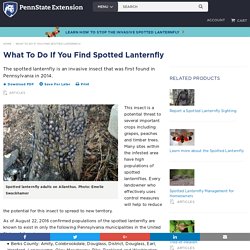
Photo: Emelie Swackhamer This insect is a potential threat to several important crops including grapes, peaches and timber trees. Many sites within the infested area have high populations of spotted lanternflies. Every landowner who effectively uses control measures will help to reduce the potential for this insect to spread to new territory. As of August 22, 2016 confirmed populations of the spotted lanternfly are known to exist in only the following Pennsylvania municipalities in the United States of America: If you find a spotted lanternfly in a municipality where it is not known to exist. Forcing Bulbs – It’s Easier Than You Think. Double-Decker Drum Composter: 11 Steps (with Pictures) I decided against documenting every step with building the frame, mainly because it's a simple enough design.
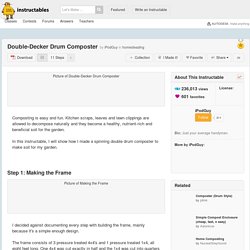
The frame consists of 3 pressure treated 4x4's and 1 pressure treated 1x4, all eight feet long. One 4x4 was cut exactly in half and the 1x4 was cut into quarters - they were to become the 2 beams and 4 stakes. I drilled pilot holes through the posts and into the beam and held them together with galvanized lag bolts. 3 Composting Techniques Everyone Should Know. We all know by now that composting is important to the environment.

It allows natural waste to return to the earth, while adding a nutrient rich material to our gardens. Here is a break down of the top 3 most common techniques for composting for the home gardener. Hot Composting – Open Bins Hot composting is the most intensive method, but also the fastest way to get finished compost. It involves building compost piles that have a balance of green material (nitrogen), oxygen, water and brown material. Build or buy three, side by side compost bins.
Bin #1 will be for brown materials…kind of a holding area for things you want to compost. Bin #2 is where all the action happens. What to Winter-Sow…And When (Updated for 2015) YOU MIGHT BE WONDERING WHEN, exactly, to winter-sow your perennials, annuals, herbs and veggies outdoors.

The easiest answer is “now.” However, depending on where you live, it pays to plant certain seeds ahead of others. The following schedule has worked well for me: Perennials and Hardy Annuals. As a rule, if a plant is hardy in your zone, you can plant its seed any time in winter, regardless of the temperature outside. Tender Annuals. Last year, in my own, zone 5-b garden, I planted perennials, annuals, herbs and vegetables using the following time-table. MarchTender Annuals, Vegetables & Herbs Impatiens wallerana Cosmos ‘Double Pink Bon-Bon’ Zinnia ‘Violet Queen’ Marigolds Lettuce (numerous varieties) Bok Choy Beets Carrots Basil Parsley.
Best Seeds For Winter Sowing: Choosing What Seeds To Winter Sow. Getting my garden on – Winter sowing tutorial. Yeah, it’s February.
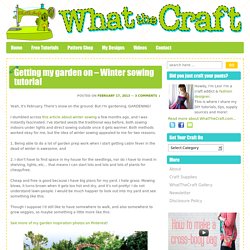
There’s snow on the ground. But I’m gardening. GARDENING! I stumbled across this article about winter sowing a few months ago, and I was instantly fascinated. Sow seeds in winter. Untitled. Gardens are beautiful, gorgeous, and very effective when used properly.
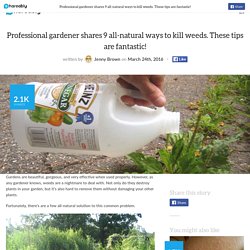
However, as any gardener knows, weeds are a nightmare to deal with. Not only do they destroy plants in your garden, but it’s also hard to remove them without damaging your other plants. Fortunately, there’s are a few all-natural solution to this common problem. Remove By Hand The most common way of removing weeds is to remove them by hand. Mulch Mulch prevents sunlight from reaching the soil, so weed seeds won’t have the proper environment to germinate and grow. Boiling Hot Water Take a kettle or pot of boiling hot water and pour it onto the weeds. Use Salt Sprinkle salt onto weeds to cause them to dehydrate. 10 Plants for a Bird-Friendly Yard. Looking to spruce up your yard this spring?
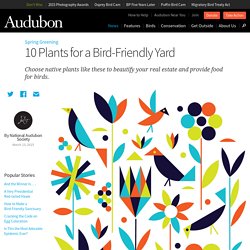
Try growing more native plants – plants that naturally occur in the area where you live. Gardening with native plants has many benefits: They’re beautiful, they’re already adapted to your precipitation and soil conditions, and they don’t need artificial fertilizers or pesticides. Of course the biggest benefit might be that native plants are great for birds and other wildlife. Native plants provide nectar for hummingbirds, butterflies, and bees. They provide nourishing seeds and irresistible fruits for your feathered neighbors, and they offer places to nest and shelter from harm. The key is to pick the right plants for your area. Native Flowering Plants: All Perennials. Urban Gardening on the Third Floor. Kerry Trueman and Matt Rosenberg began by growing tomatoes on the roof of their third-floor walk-up in the West Village more than 20 years ago.

“We didn’t know anything — we used Miracle-Gro,” said Ms. Trueman, 54, who blogs about the politics of food for Civil Eats and writes about climate change for Moms Clean Air Force. “But it changed the way I viewed things in cities. Container Gardening - Lighter Pots Better Drainage. Sites-Gardeners-Site. Root Pouch.